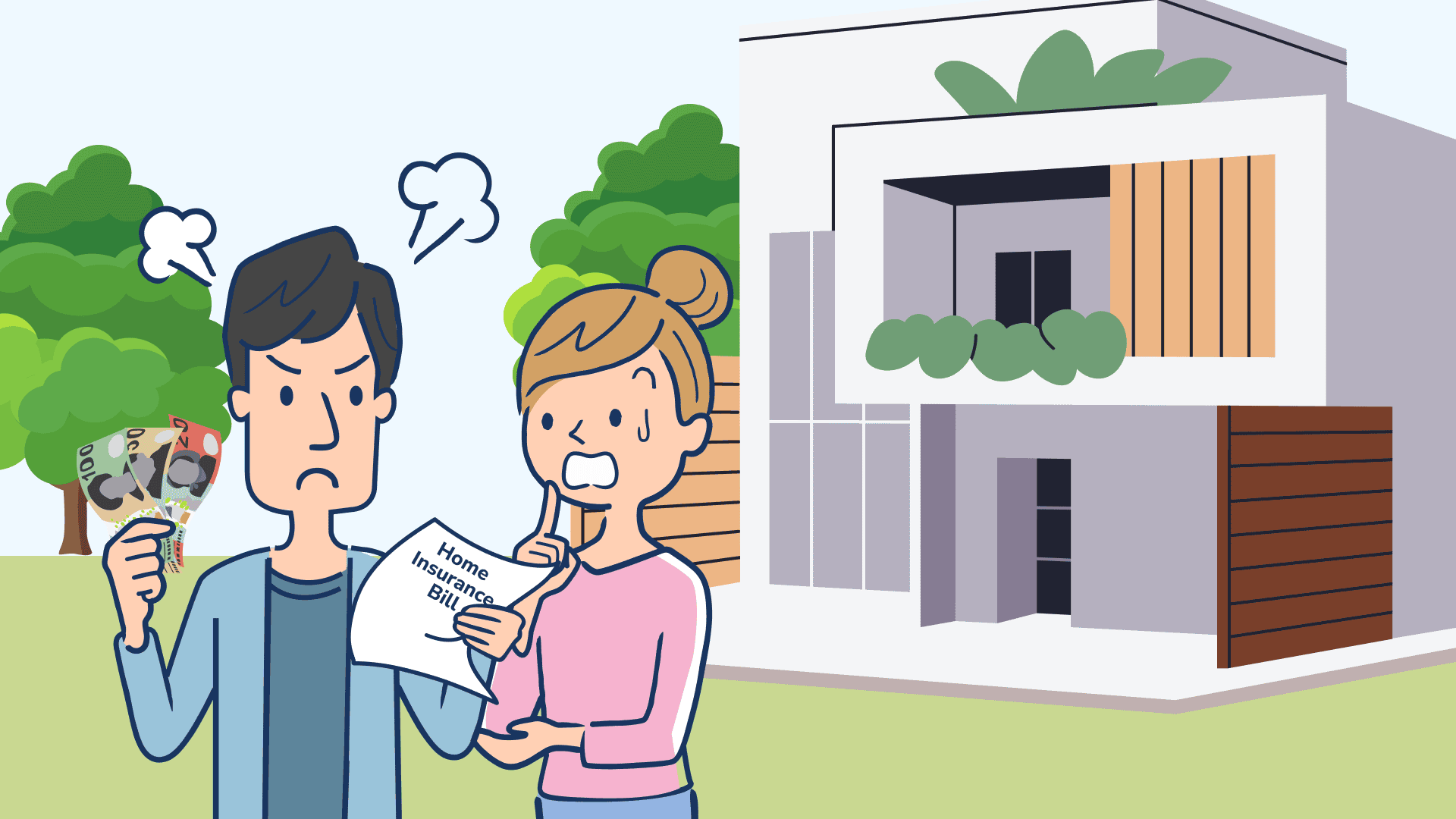Time to read : 4 Minutes
The basic answer to this question is - not in a good way.
Among all the other cost of living increases over the past twelve to eighteen months, you may have missed the quiet upward creep of your home insurance premium, or maybe you looked at it and freaked right out - with good reason.
Like everything else lately, home insurance premiums have shot for the sky. But why? And what does this mean if you have a home loan? Let’s unpick it all.
Highest home insurance premiums in decades:
Australia’s had its fair share of natural disasters over recent years, from last Christmas’s Queensland floods to the Black Summer bushfires - and these outbursts from mother nature are impacting our insurance premiums..
More severe weather events combined with an increase in building costs has led to a 28% rise in median home insurance premiums.
Properties in high-risk zones - such as flood-prone or bushfire-prone areas - saw a staggering 50% surge in their home insurance premiums.
The latest ACCC report shows a rise in average premiums for combined home and contents insurance across Australia during 2022–23.
North Western Australia reported the highest average premium, reaching $4,395 and registering a 4% year-on-year increase.
The Northern Territory saw the steepest surge among northern regions, with a 13% rise, leading to an average premium of $2,922
North Queensland experienced a 7% increase to $2,918.
In contrast, between July 2022 and June 2023, the rest of Australia saw a 15% rise in the average home and contents premium - up by $1,779.
The ACCC’s data is backed up by the Actuaries Institute. They found that the average home and contents policy peaked at an unprecedented $1,894 last year.
Whichever way you cut the data, it’s clear that homeowners are really taking a hit to their bank balance when they look to insure their property.
Why does this matter?
Home insurance affordability stress affects one in eight households, who are now spending over four weeks of annual income on insurance.
The main reason for rising home insurance premiums is - unsurprisingly - increased building costs. Then there’s a number of other additional factors, such as:
the war in Ukraine,
the pandemic,
supply chain shortages,
elevated natural disaster premiums.
And this isn’t an issue that only affects a small number of us. The Actuaries Institute report suggests that 1.24m households are struggling to afford home insurance, with 171,000 of us under severe pressure.
The main reason insurers give for their higher premiums is “riverine flood risk,” which means if your home is built on a floodplain, you’ll pay a higher premium to insure it. Riverine floods are the most common type of flood in Australia. All they need to is heavy rainfall, and ground that’s too hard to absorb it quickly, plus the river of course.
So, given our cycles of ‘droughts and flooding rains’, you can see the problem isn’t going anywhere. In fact, it’s getting worse. The Australian Climate Institute had this to add:
“Sea levels are expected to rise as the climate changes. Rising sea levels are expected to increase the risk of flooding in coastal and estuarine regions from storm surge and extreme high tides. Riverine flooding and coastal flooding interact in ways that also increase flood risk in low-lying coast regions.”
Australia’s risk of floods is increasing, which raises the insurers’ risks - so they lift your premiums. There is a real concern that some households might opt to forego home insurance cover entirely - but can you do this if you still have a home loan?
What happens to your home loan if you can’t afford home insurance?
The short answer here is no, you can’t drop your insurance if you have a home loan.
If you’ve ever secured a home loan to buy a home, you’ll know you’re required to have an insurance policy in place before your loan settles, and before you get your keys. Without this, your lender won’t approve your loan.
Sharanjit Paddam, Principal in Climate Analytics at Finity, emphasised that home insurance affordability impacts more than just your ability to stump up for your premium. It affects your ability to qualify for a home loan - and therefore, your ability to buy a home at all.
“The affordability challenge also has consequences for insurers and banks, as many people cannot afford insurance, making it harder for them to secure home loans,” explained Mr Paddam.
“Our banking system in Australia is secured by residential property. If you can't get insurance, you can't get a home loan. Your small and medium enterprises are all secured against residential properties.”
Put simply, your home insurance premium affects whether or not the home you can afford to buy is insurable - and if your home can’t be insured, you’ll be hard-pressed to find a lender who’ll back your loan.
The pool of homes available to buy will shrink further, forcing home prices upward - again.
The bottom line:
Home insurance premiums have risen a minimum of 15% across the country in the past year.
Premiums have gone up much more in the natural disaster-prone northern states.
You need home insurance to qualify for your home loan.
Home insurance is becoming increasingly unaffordable, making it even harder to buy your home.
The end result: expect all the above to push up house prices. Sorry, we wish we had better news.
